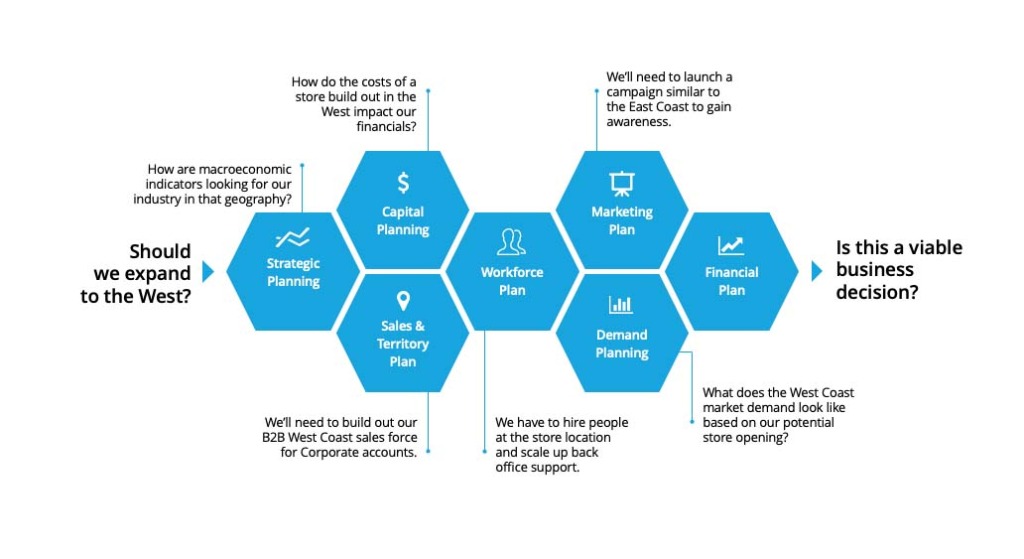Talking Tech: 5 Ways a Modern EPM System Can Give You An Edge
Meet the Author
Let’s Talk Tech.
Accordion’s “Talking Tech” series explores how different CFO Technology solutions can empower finance functions to support organizational strategic initiatives – by implementing business process recommendations, optimizing operations, and capitalizing on value creation opportunities.
Now, let’s take a look at 5 ways modern cloud-based EPM systems can be leveraged to impact financial solutions and beyond.
We still might not have flying cars, but at least we’re roaring into the ‘20s with a new class of robust, efficient, and promising EPM tools. Over the last couple of years, EPM technologies in the cloud have grown by leaps and bounds, providing new functionality and opportunity. Looking forward, these tools will continue to improve and advance the methods of FP&A, financial consolidations, and reporting of yesteryear.
So, close your spreadsheets for a few minutes (they aren’t going anywhere) and allow us to explain 5 ways modern cloud-based EPM systems can be leveraged to impact financial solutions and beyond.
1. Simplifying and Automating More Processes Than Ever
When it comes to simplifying and automating business processes, a modern EPM system has it all covered. With many cloud products, common functionalities are provided out of the box and require little effort to customize (if needed at all). For example – on the FP&A side of things, seeding budgets/forecasts and performing spreads or allocations are mostly pre-built. For consolidations, ownership and cash flow come ready out of the box. All you have to do is fine tune it to fit your needs.
In addition to simplifying them, certain operations can be developed to run without human intervention at all. Automation routines can be scheduled to run on certain days and times, and these routines can do everything from automatically acquiring and mapping source data, loading it into your FP&A and consolidation applications, running necessary calculations, and notifying you when it is all complete.
Bottom line: Your budget/forecast, consolidation, and close processes just got a lot more accurate and quicker to complete. All you need to do is report. (And you can still view/edit everything in Excel if needed – see, told you it wasn’t going anywhere).
2. Real-Time Reporting and Insights
This might be beating a dead horse by now, but it is such a game changer that it still bears repeating. We use tools in our daily lives that give us immediate results so we can make informed decisions: “Alexa, what is the weather forecast for today?” We should absolutely be able to do the same with our financial questions, and now we can.
In a modern solution, real-time reporting actually exists and can greatly enhance financial decisions. For example – if you want to forecast the impact of currency fluctuations on your Income Statement, all you need to do is tweak the currency rates in your model and check any P&L report or graph. Dashboards can even be built to show the FX rates and P&L data on the same screen, allowing you to tweak and view the results immediately. If you’re happy with it, click a button to copy it over into your plan. Boom – just like that, real time results.
Bottom line: Real-time reporting actually exists now. Tinker and tweak away to your heart’s content.
3. A Centralized Hub with One Version of the Truth, but Many “What-Ifs”
Many platforms – such as Anaplan, Oracle EPM Cloud, and Planful – can allow data from multiple business processes to be housed under the same roof. This way, there are less touch points and movements of data between one process and another. Gone are the days of trying to reconcile the actuals in your consolidation process with the actuals used to create a budget or forecast. They are now one and the same, and easily available to other modules.
With that being said, this doesn’t mean alternate scenarios cannot be tested. Seemingly endless what-if versions of your forecast can be spun out to provide insight into opportunities and help prepare for shortcomings.
Bottom line: Less reconciling and validating data, more analyzing and acting on it.
4. Trust in A Solid Infrastructure
You might not always be aware of it while looking at your year-end results, but the servers and hardware that systems run on can significantly impact financial processes. Consider the on-premise systems of yesteryear: waiting several minutes (or even hours) for calculations to finish running, waiting for the next data refresh, waiting, waiting, waiting. All of that waiting is valuable time that you could be using to react to changes or complete your processes sooner.
Today’s systems are operated and maintained by the software vendor you have chosen, so you don’t have to house and manage servers, and the systems are always up to date (no more upgrade projects). Additionally, the applications all run “in-memory”, which is a fancy term meaning quickly and on-demand. The hardware used is top of the line and configured specifically for the applications that you are using to enable this ability.
Bottom line: This translates into time saved, faster results, and never falling behind in the technology. Additionally, valuable IT resources that can be utilized elsewhere.
5. Connected, Continuous, Collaborative Operations

This might be the most important feature of many new EPM tools, and will help to drive the future of business solutions for years to come. Many vendors use terms to allude to a common concept emerging in business technology – the idea that data for all business operations can be housed in a single platform that is seamlessly utilized across business functions.
For example – sales data is entered by a salesperson in the field, and almost immediately this data is then factored into sales models, as well as pumped right into close reporting, budgets, forecasts, and other modeling – all in the same system. At most businesses today, this data would need to be loaded, exported, and loaded again across many separate applications. Imagine being able to easily see the impact of changing underlying data or plans on your balance sheet, cash flow, and income statement.
This type of single-system solution might be a little too lofty to imagine right now, but many technologies are driving toward this ambitious goal. Even if your business never gets to the point of housing all business data within one system, if only implemented across a few business functions this could still greatly streamline operations.
Bottom line: At the end of the day, your data is all connected. So, let’s actually connect it.



